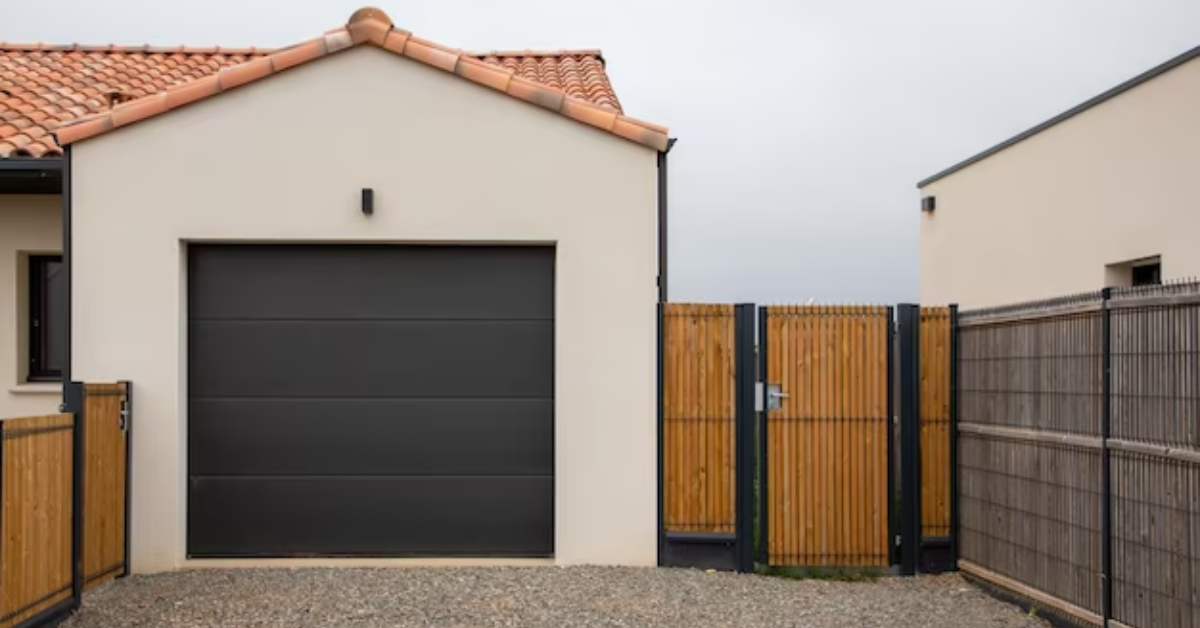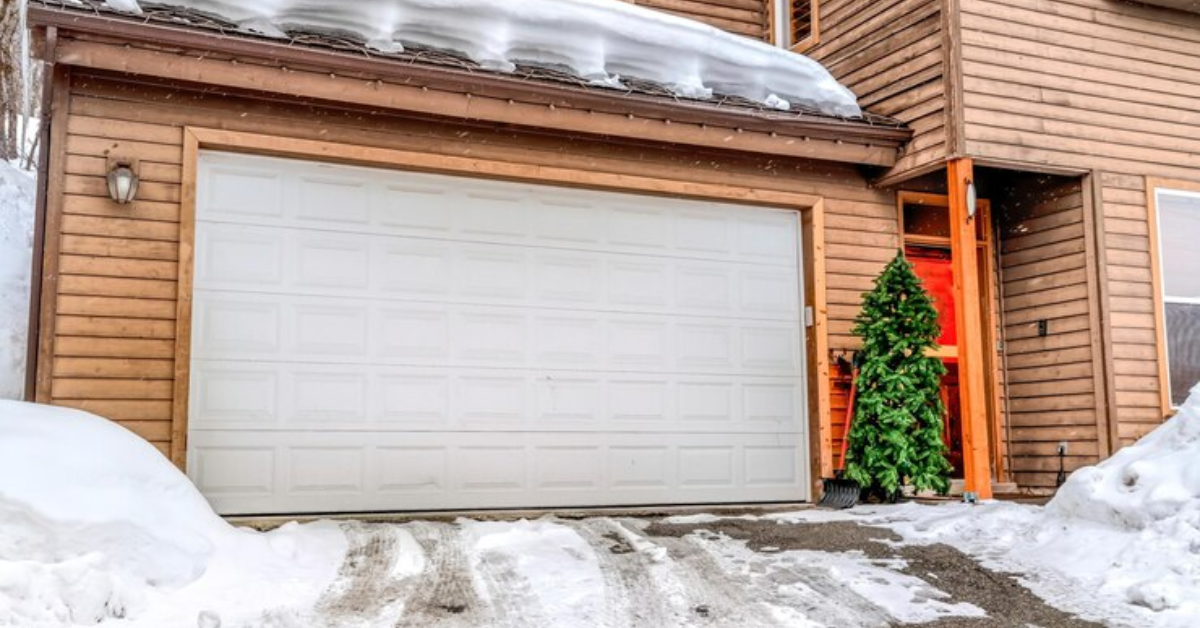Are Modern Garage Doors Secure Enough?
In an era where security stands as a paramount concern for homeowners, the integrity of garage door security holds a pivotal role in safeguarding properties. The evolution of modern garage door technology has been a response to the ever-growing necessity for enhanced security measures. This evolution is a testament to the recognition of the garage not merely as a storage space for vehicles but as an integral part of a home's security apparatus. The contemporary landscape of garage door security has seen remarkable advancements, aligning with the rapid progression of technology. Amidst these innovations, the question looms: Are modern garage doors truly secure enough to meet the rigorous demands of today's security landscape?
Garage door security has transcended its conventional function, stepping into a realm where it serves as an interface between the outside world and the sanctity of the home. The advent of sophisticated materials, reinforced structures, and integrated technological solutions has redefined the parameters of what constitutes a secure garage door. As we delve deeper into the inquiry regarding the sufficiency of modern garage door security, an exploration into the significance of these advancements and their practical implications becomes imperative.
This exploration seeks not only to unravel the technological feats that adorn modern garage doors but also to scrutinize their efficacy in providing the much-needed shield against potential intrusions. Join us in this journey through the layers of contemporary garage door security, examining its evolution, strengths, vulnerabilities, and the extent to which it aligns with the prevailing demands for safety and protection in our homes.
Assessing Modern Garage Door Security
Modern garage doors come fortified with an array of security measures designed to safeguard homes against potential threats. These built-in security features encompass a range of advancements, from traditional locking mechanisms to cutting-edge technological integrations. Standard security measures in contemporary garage doors often include robust locking systems, reinforced door frames, and improved access control mechanisms. The integration of technological advancements has further fortified these features, introducing innovations such as rolling code technology, which enhances encryption and prevents unauthorized access attempts. These advancements not only bolster the physical barriers but also add layers of digital security, significantly elevating the overall security profile of modern garage doors.
Strength and Durability
One of the critical facets defining modern garage door security lies in the materials used for construction. The evaluation of construction materials is pivotal in determining the door's resilience against potential intrusions. Contemporary garage doors often utilize a variety of sturdy materials, ranging from steel and aluminum to composite materials. These materials are chosen for their durability and ability to withstand external forces, thereby mitigating the risks posed by attempted break-ins. Assessing the durability of these materials against potential intrusions involves rigorous testing to simulate real-world scenarios. Factors such as resistance to impact, structural integrity, and resilience against forced entry methods are scrutinized to ensure the door's ability to withstand intrusion attempts.
The evolution of construction materials has led to the development of garage doors that not only serve as barriers but as formidable deterrents to unauthorized access. Advances in material technology have enabled the creation of doors that strike a delicate balance between strength, durability, and aesthetic appeal. Modern garage doors, crafted from these materials, not only fortify homes but also provide homeowners with a sense of confidence in their security measures.
Vulnerabilities and Risks
Despite the advancements in modern garage door security, there exist potential weak points that intruders may exploit. These vulnerabilities often revolve around specific areas susceptible to tampering or break-ins. Common weak points include compromised or outdated locking mechanisms, poorly secured access points, or vulnerabilities in electronic systems such as
remote controls or keypad entries. Intruders may also exploit weak door frames, hinges, or
panels, which could be prone to forced entry attempts.
Insights garnered from reported security breaches with modern garage doors provide invaluable knowledge about the real-world risks associated with certain door types or features. These instances shed light on vulnerabilities that might not have been apparent in controlled testing environments. Real-life scenarios often reveal instances where intruders circumvented security measures, providing a practical understanding of how specific door types or features can be compromised. Understanding these risks equips homeowners with the knowledge necessary to fortify vulnerable areas and mitigate potential security breaches.
By identifying these vulnerabilities and learning from real-life scenarios, homeowners can take proactive measures to bolster the security of their garage doors. Regular inspections, maintenance of security features, and potential upgrades based on identified weaknesses are essential steps in fortifying garage door security and ensuring comprehensive protection against potential intrusions.
Technology and Security Integration
The infusion of smart technology has revolutionized garage door security, offering innovative solutions to fortify home protection. Smart technology plays a pivotal role in enhancing garage door security by integrating advanced features that enable remote monitoring, access control, and real-time alerts. These smart security features provide homeowners with increased convenience and heightened security awareness. Benefits include remote access management through smartphones or tablets, real-time notifications of door activity, and the ability to integrate with home security systems. However, these advancements come with limitations, such as potential susceptibility to hacking or system malfunctions, emphasizing the importance of robust encryption and continuous software updates to counter potential vulnerabilities.
The reliability of remote access systems is a crucial aspect in assessing the overall security of garage doors. Remote access facilitates the control of garage door operations from anywhere, allowing homeowners to open, close, or monitor the door's status remotely. These systems offer convenience but must prioritize security. Ensuring encrypted communication channels and implementing multi-factor authentication enhances the reliability of remote access systems. Furthermore, monitoring options that provide comprehensive insights into garage door activity, including door open/close logs or real-time camera feeds, contribute significantly to heightened security awareness and swift response to any suspicious activities or breaches.
The integration of
smart technology into garage door security presents an array of benefits but demands meticulous attention to security protocols to mitigate potential risks. Implementing robust security measures within smart systems, coupled with continuous monitoring and updates, ensures a seamless integration of technology while fortifying the overall security of garage doors.
Practical Security Measures
Supplementary security measures play a crucial role in fortifying garage door security beyond standard features. These enhancements offer added layers of protection, reinforcing the existing security apparatus. Some practical measures to bolster garage door security include:
Install Security Cameras:
Strategically placing security cameras provides visual surveillance, deterring potential intruders and allowing homeowners to monitor garage activity remotely.
Motion-Activated Lighting: Installing motion-activated lights around the garage area illuminates any movement, making the vicinity less appealing to intruders and increasing visibility during nighttime.
Upgrade Locking Systems: Adding deadbolts or smart locks to complement existing locking mechanisms enhances physical barriers and increases resistance against forced entry attempts.
Secure Access Points: Strengthening access points, such as windows or side doors, with sturdy locks or reinforcement bars, prevents unauthorized entry into the garage area.
Practical Tips for Homeowners
Empowering homeowners with practical tips to improve overall security involves fostering a proactive approach towards safeguarding their garage areas. These tips include:
Regular Maintenance:
Conduct
routine inspections and maintenance of garage door components, ensuring proper functionality and promptly addressing any issues that arise.
Limit Remote Access: Avoid sharing remote
access codes or garage door opener remotes with unfamiliar individuals to prevent unauthorized entry.
Educate Family Members:
Educate household members about security protocols, emphasizing the importance of securely closing the garage door and not leaving it open unnecessarily.
Neighborhood Watch: Collaborate with neighbors to establish a watchful community, encouraging mutual vigilance and reporting any suspicious activities around the neighborhood.
Implementing these supplementary security measures and adopting proactive practices empowers homeowners to enhance the overall security of their garage areas, ensuring a more robust defense against potential intrusions.
Addressing Concerns and Solutions
Identifying and addressing security vulnerabilities in modern garage doors is paramount to fortifying overall security. Several strategies can effectively mitigate these concerns:
- Conduct routine security audits to identify potential weak points in garage door security. This involves inspecting locks, hinges, sensors, and other components for any signs of wear or vulnerability.
- Address identified vulnerabilities by upgrading or reinforcing weak components. Replace outdated locks with more secure versions, reinforce door frames, or consider installing additional security features to bolster defenses.
- Employ encryption protocols, multi-factor authentication, and regular software updates to safeguard smart technology integrated into garage door systems. Ensure that smart systems have robust security measures in place.
Recommendations for Strengthening Security
For areas lacking in security measures, specific recommendations can substantially improve garage door security:
- Upgrade to high-security locks or smart locking systems that offer enhanced resistance against tampering or forced entry attempts.
- Reinforce weak points like hinges, frames, or access points with additional hardware, such as reinforcement bars or security grilles, to bolster resistance against intrusions.
- Engage professional locksmiths or security experts to conduct thorough assessments and recommend tailored solutions to address specific security gaps.
Implementing these strategies and recommendations equips homeowners with proactive measures to fortify garage door security, addressing vulnerabilities and enhancing overall protection against potential intrusions or security breaches.
Conclusion
The assessment of modern garage door security reveals a landscape rich in advancements yet susceptible to vulnerabilities. To maximize garage door security, homeowners should engage in regular maintenance, embrace technological advancements cautiously, and consider supplementary security measures. While modern security measures offer substantial protection, their adequacy lies in the homeowner's proactive approach towards identifying and addressing potential weak points. By adopting a vigilant stance and implementing tailored security solutions, homeowners can fortify their garage door security, creating a robust shield against potential intrusions and reinforcing the safeguarding of their homes and belongings.




